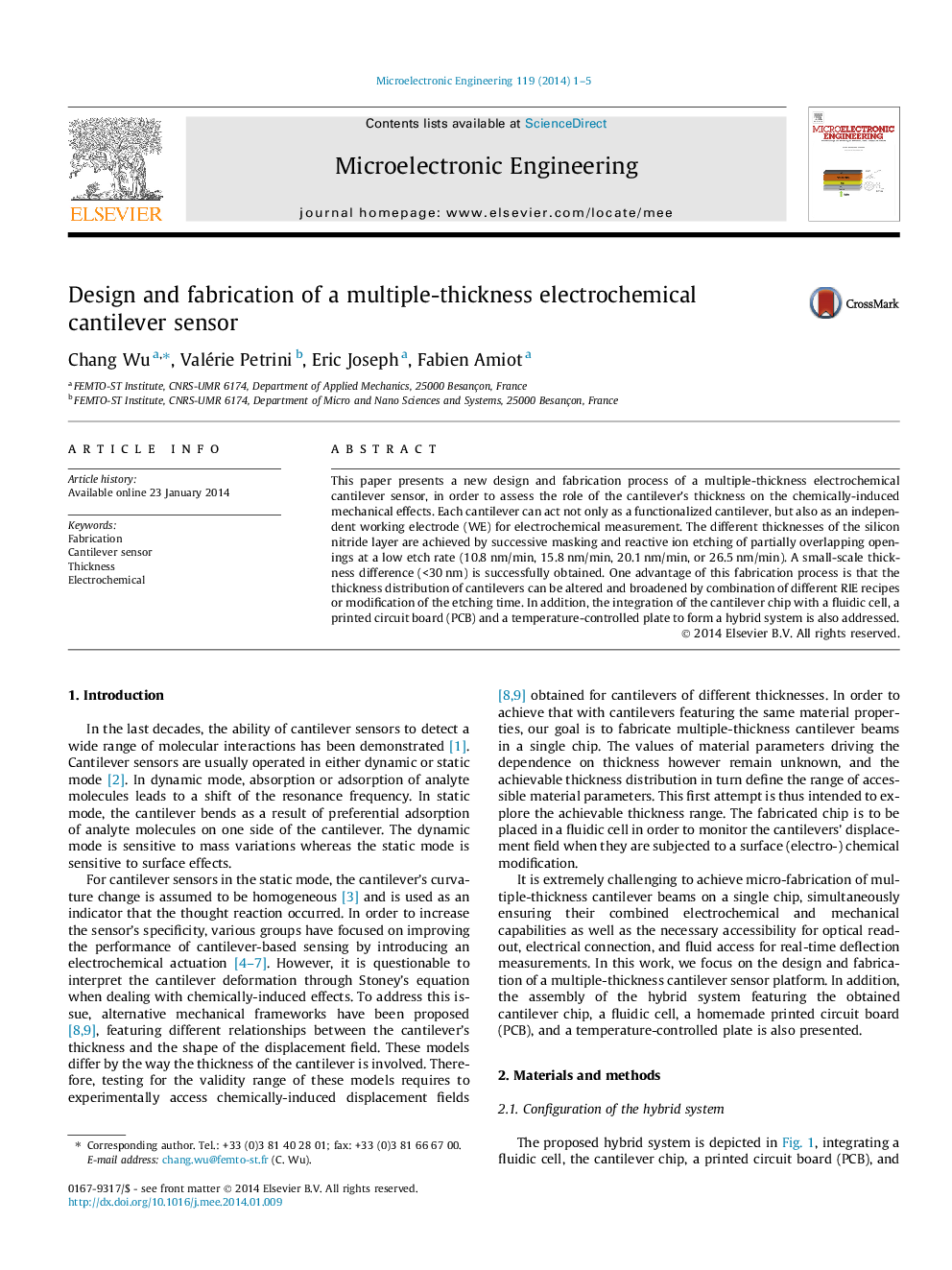| Article ID | Journal | Published Year | Pages | File Type |
|---|---|---|---|---|
| 542587 | Microelectronic Engineering | 2014 | 5 Pages |
•Cantilever thicknesses are achieved by etching at a low etching rate recipes.•A small-scale thickness difference (<30 nm) is successful obtained.•The thickness distribution of cantilever can be altered and broadened.•A fluidic cell is designed to pour solutions and set an electrochemical cell.•Issues of electrical and fluidic connections are addressed.
This paper presents a new design and fabrication process of a multiple-thickness electrochemical cantilever sensor, in order to assess the role of the cantilever’s thickness on the chemically-induced mechanical effects. Each cantilever can act not only as a functionalized cantilever, but also as an independent working electrode (WE) for electrochemical measurement. The different thicknesses of the silicon nitride layer are achieved by successive masking and reactive ion etching of partially overlapping openings at a low etch rate (10.8 nm/min, 15.8 nm/min, 20.1 nm/min, or 26.5 nm/min). A small-scale thickness difference (<30 nm) is successfully obtained. One advantage of this fabrication process is that the thickness distribution of cantilevers can be altered and broadened by combination of different RIE recipes or modification of the etching time. In addition, the integration of the cantilever chip with a fluidic cell, a printed circuit board (PCB) and a temperature-controlled plate to form a hybrid system is also addressed.
Graphical abstractFigure optionsDownload full-size imageDownload as PowerPoint slide
